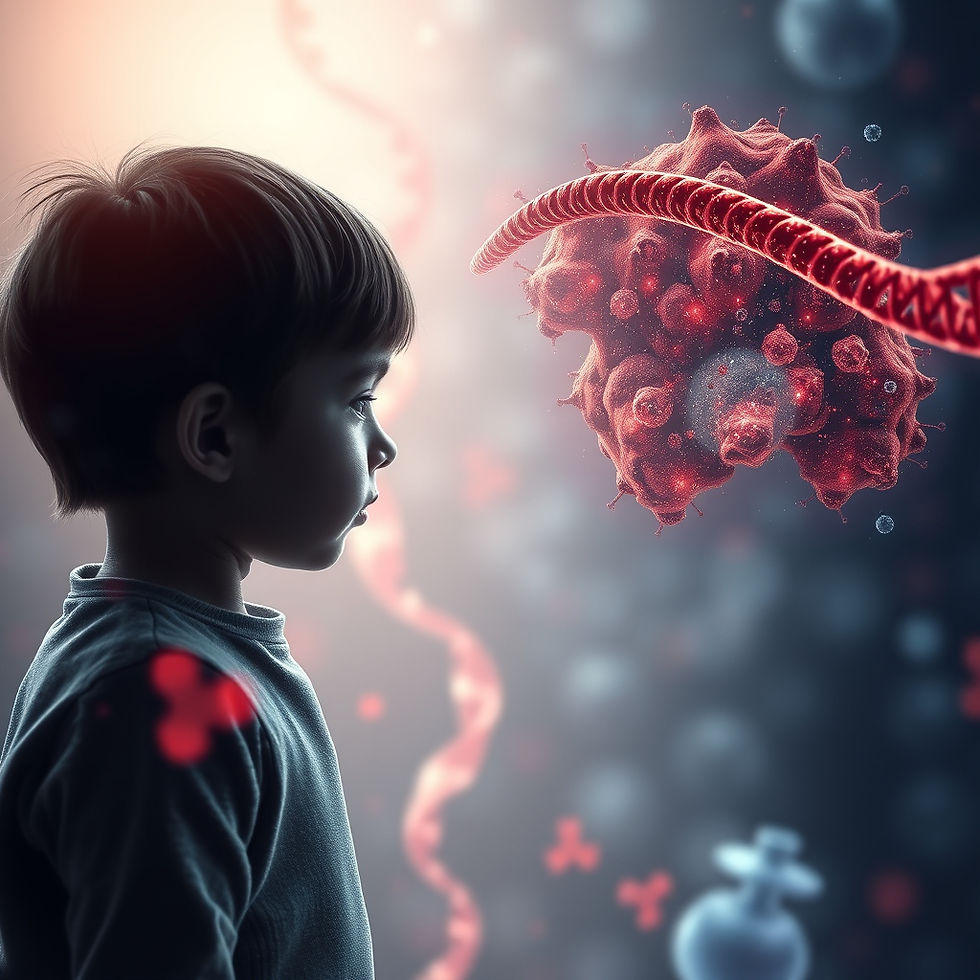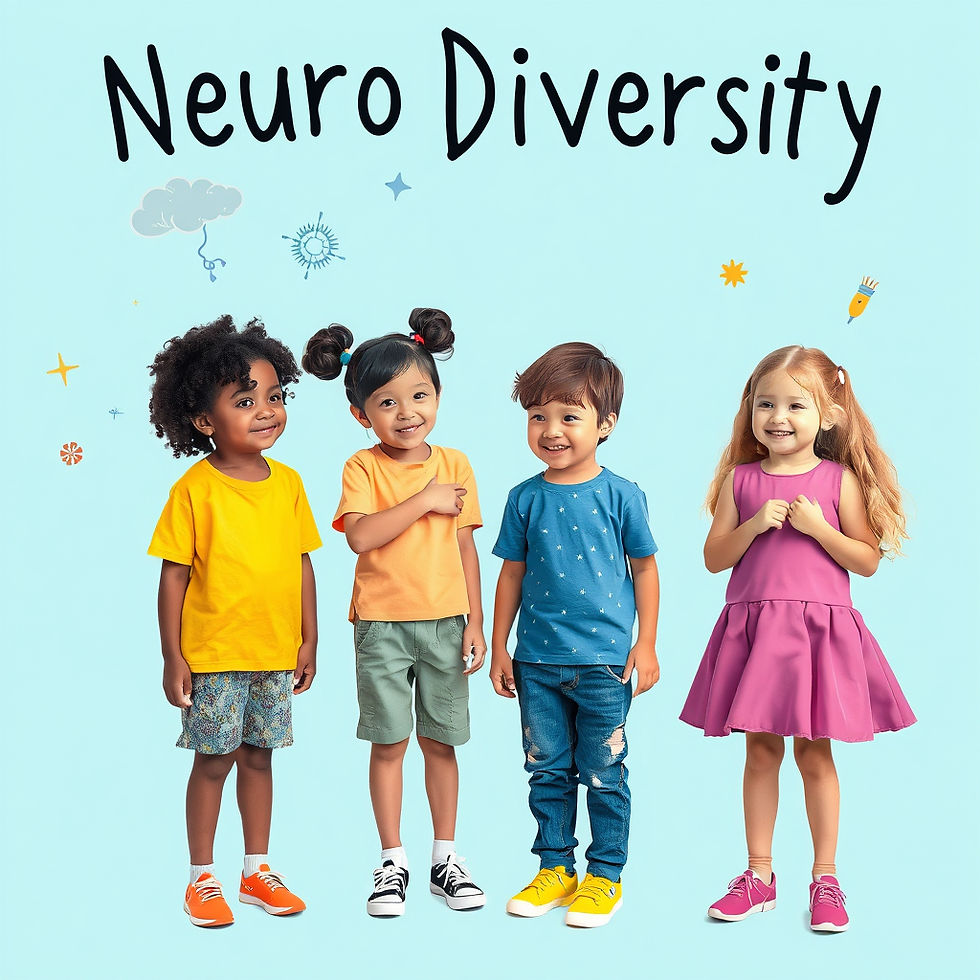🧠 What’s New in Autism Research? Exploring the Latest Trends in 2025
- Michelle Wickizer
- Jun 21
- 3 min read
Autism Spectrum Disorder (ASD) has become a topic of growing conversation and research in recent years. Whether you’re a parent, educator, clinician, or simply someone who cares, you’ve probably noticed how much more we’re learning—and how our understanding is shifting.
So, what’s happening right now in the world of autism research? Here’s a quick tour through the latest trends, discoveries, and what they could mean for the future.

📊 Autism Diagnoses Are Rising—But That’s Not a Bad Thing
You might have seen headlines saying autism rates are going up. And it’s true: recent data shows that around 1 in 31 children in the U.S. is now diagnosed with ASD.
But before we panic, here’s the good news: the increase doesn’t mean more people are developing autism—it means we’re getting better at identifying it, especially in groups who were historically overlooked (like girls and adults).
We're also seeing more people diagnosed with “milder” forms of autism, thanks to better screening and awareness.
🧬 Genetics, Not Blame
The science is clear: autism is mostly genetic. Around 80% of the risk comes from inherited factors, though no single “autism gene” has been found. Instead, it’s a mix of hundreds of genes working in complex ways.

Researchers are also looking at epigenetics—how life experiences can affect how those genes work. That might help explain why autism looks so different from person to person.
And let’s put one myth to rest: vaccines do NOT cause autism. That theory has been thoroughly debunked, again and again.
🧠 What Happens as Autistic Kids Grow Up?
Autism doesn’t follow a one-size-fits-all path. While some kids develop skills steadily, others show late improvements—or even regressions in areas like social connection or communication.
New research shows that the brain remains flexible longer than we used to think. That means kids with autism can continue learning and growing well into their teen years and beyond—especially with the right support.
In fact, some early signs of autism can shift significantly during childhood. That’s why ongoing support and updated assessments are so important.
🔍 Cool Tech: How AI and Brain Scans Are Changing the Game

One of the most exciting areas of research right now is the use of technology to detect autism earlier and more accurately.
For example:
Eye-tracking software is helping researchers spot early signs of autism in toddlers.
Brain imaging and AI are being used together to analyze how autistic brains work differently, leading to smarter diagnoses.
New tools even analyze home videos to flag potential signs for follow-up.
These innovations could mean quicker diagnoses, especially in areas with few specialists.
💊 Medication: What’s on the Horizon?
Right now, there’s no “cure” for autism—and most researchers aren’t looking for one. Instead, the focus is on helping people thrive by treating specific challenges like anxiety, sleep issues, or attention problems.

Promising new treatments include:
Leucovorin, a low-cost medication, which has shown encouraging results in helping with language and social skills.
New compounds like L1-79 and AB-2004, which are in clinical trials to target social communication.
We’re moving toward personalized medicine—treatments tailored to a person’s biology and needs, rather than a one-size-fits-all approach.
🌐 Therapy That Meets You Where You Are
Thanks to telehealth, more families are accessing autism therapies—like behavioral therapy and speech support—from their own homes.
Even virtual reality (VR) is being tested as a way to practice social skills in a safe, fun environment.
This is great news for families who live in rural areas or can’t easily get to appointments.
🧩 A Shift in Mindset: Neurodiversity and Acceptance
Perhaps the biggest change isn’t happening in labs—it’s happening in our culture.
The neurodiversity movement encourages us to see autism not as a disorder to be “fixed,” but as a natural variation in how human brains work.

This shift is leading to:
Less pressure to force autistic people to “fit in”
Greater acceptance of behaviors like stimming or needing quiet time
A growing push to design schools, workplaces, and healthcare to be more inclusive
It’s about support, not suppression.
🛤️ So, Where Are We Headed?
Here’s what the future of autism research looks like:
Early, accurate diagnosis using AI and advanced imaging
Personalized support plans for every stage of life
Medications and therapies based on individual biology
More inclusive society, shaped by autistic voices and values
In other words, the future is about understanding autism deeply—and celebrating each person’s unique path.
💬 Final Thoughts
Autism research in 2025 is smarter, more compassionate, and more hopeful than ever. We’re moving beyond outdated stereotypes and toward a world where autistic individuals are recognized, supported, and empowered.
Whether you’re new to autism or deeply involved in the community, now’s a great time to stay informed—and help shape a future that works for everyone.




Comments